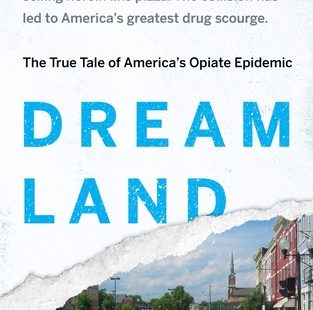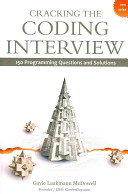Disclosure: I may earn affiliate revenue or commissions if you purchase products from links on my website. The prospect of compensation does not influence what I write about or how my posts are structured. The vast majority of articles on my website do not contain any affiliate links.
Dreamland: The True Tale of America’s Opiate Epidemic by Sam Quinones
Rating: ★★★★★
Date Finished: October 31th, 2017
Reading Time: Two weeks; audiobook
This is an American horror story. Similar to Ioan Grillo’s El Narco, the narrative drags you into a world that should be reserved for the make-believe. And it only gets more gut-wrenching as you go on. Unlike El Narco, which focused mainly on the history of the drug trade in Mexico, Dreamland hits much closer to home. And it hurts.
In a country that seeks comfort over all else, heroin is the ultimate remedy. Many, many years ago, before I understood what heroin was and before every city like mine in Pennsylvania developed an appetite for narcotics, I read a quip on Reddit describing heroin use. The poster plainly stated that heroin healed pain you didn’t know you had. And that, before you knew it, the morphine molecule had taken control of your life. I’ve never forgotten that description buried deep in a comment thread.
Dreamland brought this back to the forefront of my mind. Though, I’m already numb to the reality behind the obituaries of so many young people in my hometown. I picked up Dreamland because I wanted to understand what the hell is going on. I wanted to know if my biases were correct and where I had much to learn. Who is to blame? How has this epidemic come to exist and propagate so rapidly?
While there are many individual stories told in Dreamland, there are three distinct threads. They are: 1. The Xalisco boys, drug traffickers with a distinct ‘decentralized franchise’ style of dealing, hailing from a small region of Mexico, 2. The pharmaceutical companies’ reckless promotion of painkillers and the doctors who both knowingly and unknowingly made the crisis worse, and 3. The death of the American small town (but, really, the decline of the middle class)
All things considered, the interweaving of these themes works really well. The narrative has an appropriately uplifting ending, and all threads are tied off satisfactorily. However, there are two main problems with the book.
The first big problem is with the Xalisco Boys. The backstory is that this is a region of Mexico that is extremely poor. The young men in the region first found an opportunity to sell heroin in the United States, the popularity of which piggybacked off the proliferation of prescription painkillers. This was long before 60 Minutes ran a segment on OxyContin. Small teams would avoid major metropolitan areas and would open cells in smaller cities throughout the United States. Their operatives were disciplined with no taste for vanity. A couple drivers would swallow the ballooned (literally- in a balloon) heroin when pulled over. A call center operator would direct drivers to junkies. Stashes were kept to a minimum. Cash was regularly wired back to Mexico. Levi’s 501s became a currency, too. The men commonly faced deportation instead of jail time. Those deported were quickly replaced.
The Xalisco Boys would go home to Mexico every six months or so and would buy their families houses, purchase businesses, and throw lavish parties where each narco tried to one-up the next. They had few possessions while in the US; most didn’t even bother to purchase a mattress. They were religious. They were family-oriented. They were hardworking. They kept to themselves.
And the effect of all of this is that it’s hard to perceive the Xalisco Boys as the villains they were. It’s hard not to just want to pat them on the back and say “Good job, you earned it!” and let them be. They’re just normal people exploiting a system that greedy pharmaceutical companies and outdated police investigation methodologies allowed to manifest, right? While I don’t feel the author had a duty to frame them as terrible people, he did a really great job of framing them as relatable human beings. In El Narco, the violence was atrocious, and most of those involved in the drug war in that book came from the exact same circumstances as those profiled in Dreamland. The absence of wanton violence goes a long way in shifting perception of essentially the same breed of criminal.
Another other problem I have with this book, or, better yet, something that I feel the need to say spurred by this theme, revolves around the root causes of heroin abuse. The author makes a solid case for the initial rise being primarily based off of over-prescription of pain medication. This makes sense. People get hurt or are in chronic pain, get prescribed a ridiculous amount of pills, become addicted, and eventually turn to heroin. Heroin comes to town because Mexican dealers have been advised by addicts that the town is teeming with Oxy abusers who can no longer afford the pills. This is covered extensively, but the author manages to take a few shots at what the real cause is. It’s something much more sinister- something that would be impossible to substantiate in a book.
We all suffer from pain that can’t easily be healed. Globalization has created this crazy reality where expectations for each facet of our lives are growing at a rapid pace while the opportunities available to the average person are, in actuality, shrinking. Coupled with the fact, frequently substantiated by the author, that the last few generations have been raised with less tolerance for what hurts them, this is what bolsters the current phase of the epidemic. When you consider that the average person’s likelihood of becoming addicted after just several doses is nearly 100%, the reality seems bleak. The only solution has something to do with better pain management.
Dreamland is exceptional and extraordinary. I understand this can be an emotional topic. I understand that we all have strong biases. Though aside from the “addiction is a disease” nonsense, I feel they are beginning to converge. The book has flaws but none so glaring that I would conclude the author is doing anyone a disservice. I believe we have a civic duty to understand the issues affecting us most severely domestically. This book provides a window into a freakish period in American history. One which we are living in and can no longer ignore.
See this review and others on Goodreads.com




